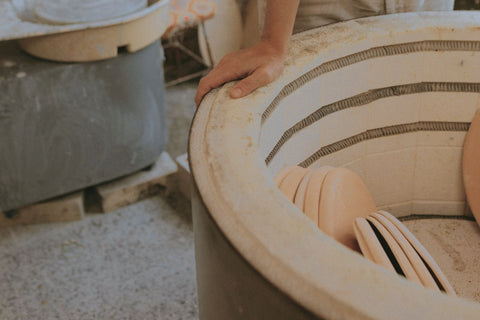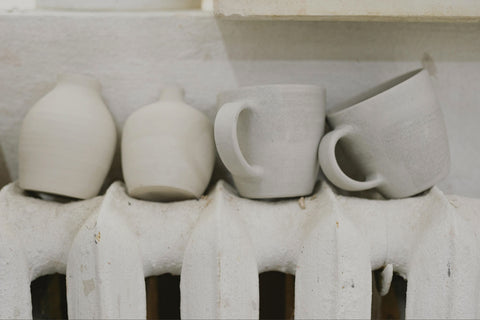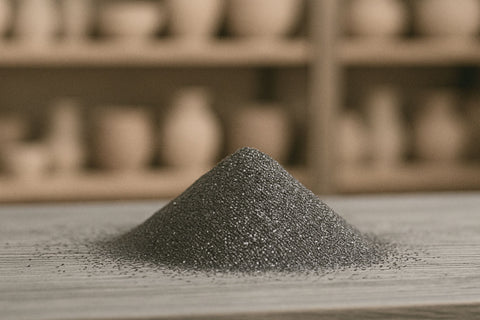introduction: what makes bisque firing and glaze firing necessary but distinct stages in pottery?
in pottery, every step plays a role in the outcome. bisque firing and glaze firing stand out as two essential stages. so what exactly sets them apart - and why are both necessary? this post offers a simplified overview of each process, focusing on their distinct purposes and outcomes. compare this video and this video to see the difference between a piece that’s been bisque-fired and one that’s glaze-fired.

bisque: the first firing
bisque firing is the first heat treatment clay undergoes. it transforms the piece into a porous yet firm state known as "bisque" or "biscuit." this firing is usually done between cone 06 and cone 04 — or 1828 °F to 1945 °F. yes, that’s really how hot kilns get.
key objectives
-
removes water: drives out both physical and chemical water from the clay
-
increases strength: creates a solid structure that’s still porous enough to absorb glaze
-
burns off impurities: removes organic materials that could cause defects in glaze firing
glaze: the second firing
after glaze is applied to the bisque-fired piece, it undergoes glaze firing. this is where the glaze melts and fuses into a glassy coating. glaze firing typically reaches cone 5 to cone 10 - 2167 °F to 2345 °F - depending on the materials used.
key objectives
-
melts the glaze: heat causes the glaze to flow and settle into a smooth, sealed finish
-
vitrification: the clay body fuses into a non-porous, durable form
-
aesthetic qualities: final color, texture, and surface effects develop here

comparing bisque and glaze firing
-
temperature: bisque firing is cooler than glaze firing
-
purpose: bisque prepares the ware to accept glaze; glaze firing matures and seals it
-
ware state: bisqueware is porous and fragile; glaze-fired pieces are strong and sealed
conclusion
the process of turning raw clay into a finished piece of pottery relies on both firings. bisque firing turns greenware into a piece with enough structure to be glazed safely. glaze firing turns it into a durable, functional object. these stages are the foundation of ceramic work - one provides structure, the other delivers finish. neither can be skipped, and each plays a role in turning soft clay into art.




